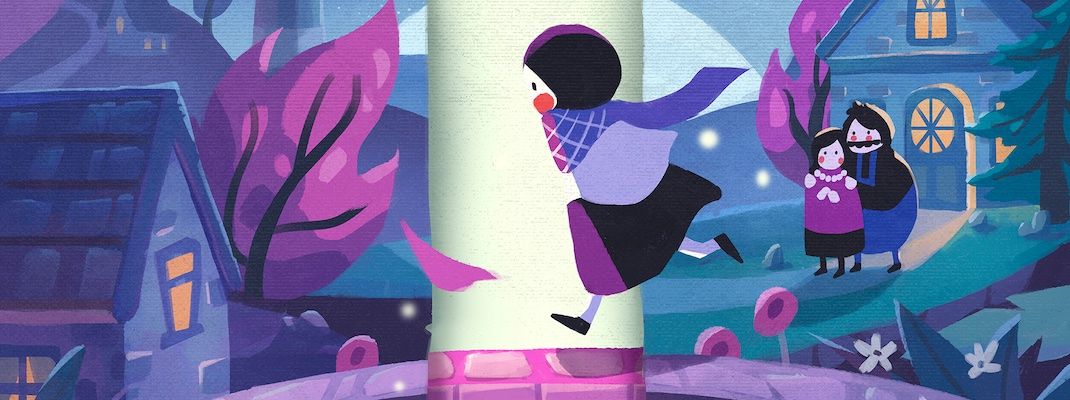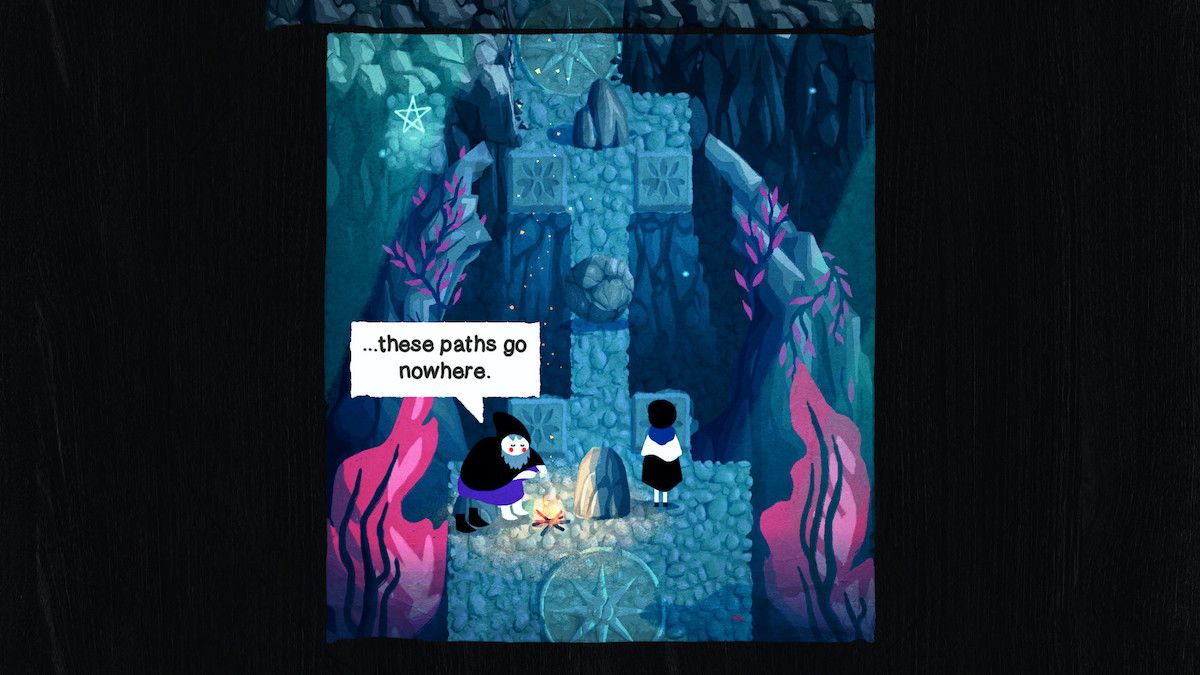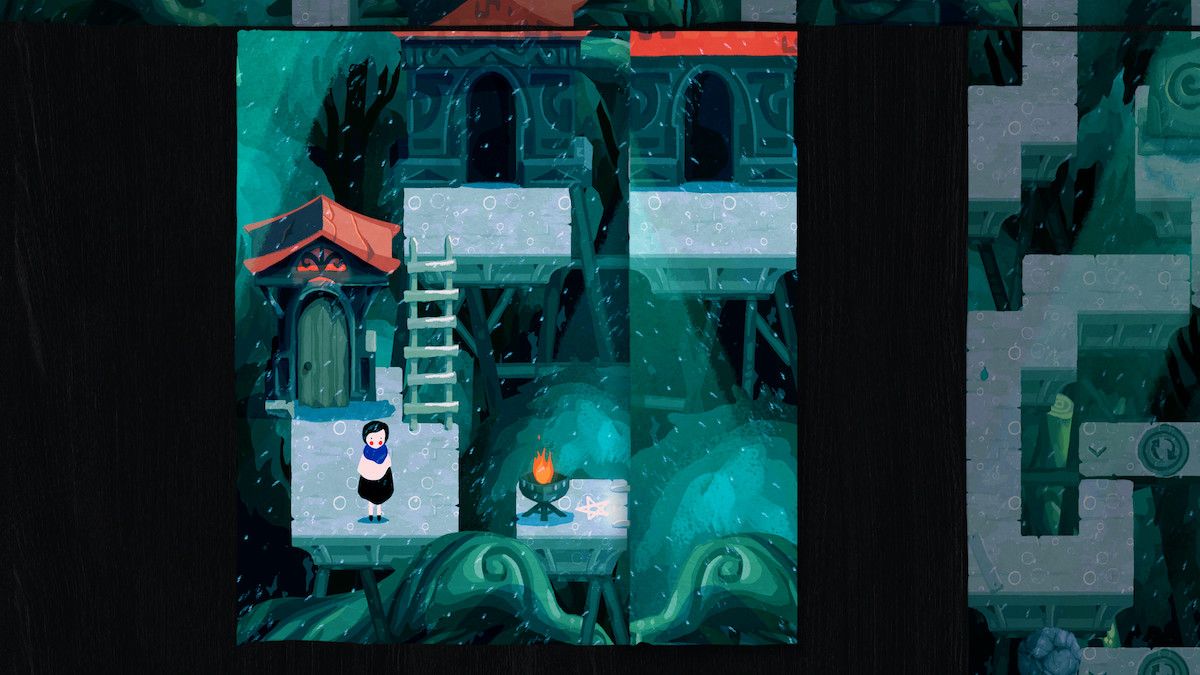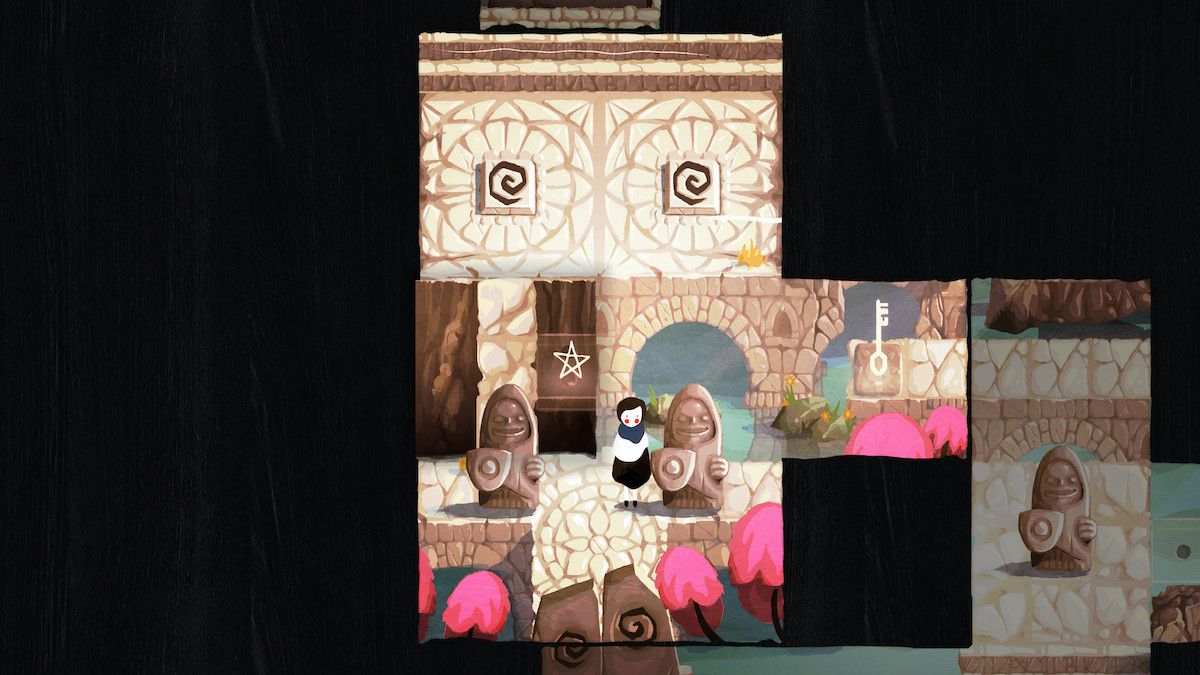One of the puzzle genre’s oldest yet still fulfilling premises it may be, it’s always nice to find a developer (singular or team-based alike) that takes to Sokoban-style pitches as less a standard to meet, but rather one to subvert. In a way, intimidation is this sub-genre’s prime ingredient: the solution is right there, staring you square in the face. But alas: it lies hidden -- tucked away beneath some unforeseen route, sequence or required manipulation of elements to get to the desired goal. So to have a game like Baba Is You come along and suggest that rather than simply interacting with said elements, you actually become said elements. Altering the decades-old standard to such a point where at one point, you yourself become the goal — WIN IS YOU — is rather refreshing. In a way, uplifting too. A puzzle convention as old as this, still finding itself transformed and reconfigured into something entirely new and creative on top.
Which is precisely the view one gets when trying out another Sokoban subversion, in the form of Paper Trail. Though for anyone having done some brief research into the developer and specifically, the individuals behind the scene, it should come as no surprise that the theme of subversion and manipulation pops up. Pleasing and in a way befitting, to find one of the creators behind 2016’s Hue is involved here. A delightful little puzzle-platformer that revolved around the use of the color spectrum to phase certain parts of the environment in and out of existence. Resulting in a fair few sequences where timing one’s moves wasn’t simply about player-character positioning, but too in quickly manifesting one color over another. How, more importantly: visual attire was not just left at the aesthetic level, but expanded outwards into that of its mechanics from a gameplay standpoint.
Though not without its faults, Hue provided something few games of such similar set-up profess: that desire to play with the foundation. Much like Baba Is You in a number of ways, to evolve such familiar mechanics into something far more interactive and all-encompassing. Because if one thing is true about Paper Trail’s main gimmick -- quite literally folding the edges of its world -- its intentions aren’t simply to provide a new element to experiment with. Paper Trail on top goes that one step further and requires you to rethink your understanding of the very surroundings. Right down to its most minor or seemingly insignificant of spots.
Better still, Paper Trail eases you into the possibilities of its paper-folding mechanic, at a sufficient pace that even at its most complex -- where a series of paths are required to be discovered so as to open a door -- experimentation is still the most prized but accessible asset. How will folding the surrounding space in one direction or at one particular corner impact the way platforms are positioned? A route structured horizontally may then shift to becoming vertical. A distant objective at one corner may then appear close-by. Novel its main mechanic is, what keeps Paper Trail’s prime means of puzzle-solving intriguing is that added layer of deduction. Figuring out not just the solution to one’s desired end goal, but how the level will end up being manipulated through one’s design. A manipulation that naturally has its limits; folds in the screen can’t overlap, requiring both an understanding of space, but also a foresight of sorts in knowing where and how certain routes will change depending on said folds.
More importantly: if folding or bending the environment one way will inadvertently render a certain area or grouping of platforms obsolete. For a game of seemingly small stature and relatively simple stakes, Paper Trail demands a touch more on the side of planning ahead than it may imply. Not least towards the end of the demo when one is required to fold levels in such a way -- and in the right order -- so that specific pairings of platforms become enabled. Then disabled. All while keeping a tab in your head on, as noted, if it comes to it, how folding one way may result in other parts rotating or translating to another corner of the current surroundings. Every step you take or move one may presume serves as a necessary sequence in the solution may in fact be taking you further away than said goal. And the beauty of all this: not only is this back-and-forth encouraged, it’s easy to absolve yourself of said route and start over.
There’s little concern for venturing too far down the wrong route. Even at the point of near-completion, where one incorrect deduction may spoil what one has gathered thus far. Just unfold said maneuver and try again. Even just glimpsing at how such a move impacts the level’s layout can be beneficial. As little this may speak to the later conundrums, from its early glimpses, Paper Trail doesn’t want to come across too intimidating where simply trying out the multitude of paper-folds possible feels consequential. That’s the best trait that any kind of puzzle game can wield. The idea that its solutions -- as deceptive or as tucked-away they might be -- don’t stifle that need to tinker with a game’s central mechanic. But it’s that central theme of a foldable word and of finding those hidden shortcuts and distortions of the environment that makes Paper Trail such a joy to tinker with, let alone figure out.
Not just in terms of its main assortment of maze-like routes forward, but on the simple allure of how literal folds on-screen will shape the path forward. How insignificant features in the environment can become significant through little more than a bending of some paper-like material. Where horizontally-aligned elements become vertical and vice versa. Paper Trail doesn’t just pose a problem to work out by way of its key gameplay mechanic. It’s that very invitation to subvert and distort the apparatus on hand -- by your own hand -- where developer Newfangled Games have all-but-secured one’s glee. Viewfinder may be the one to beat when it comes to subverting one’s understanding of three-dimensional space, but Paper Trail looks to be brilliantly countering such heightened expectations. Posing as equally-engaging a question when it comes the genre’s two-dimensional equivalent.




